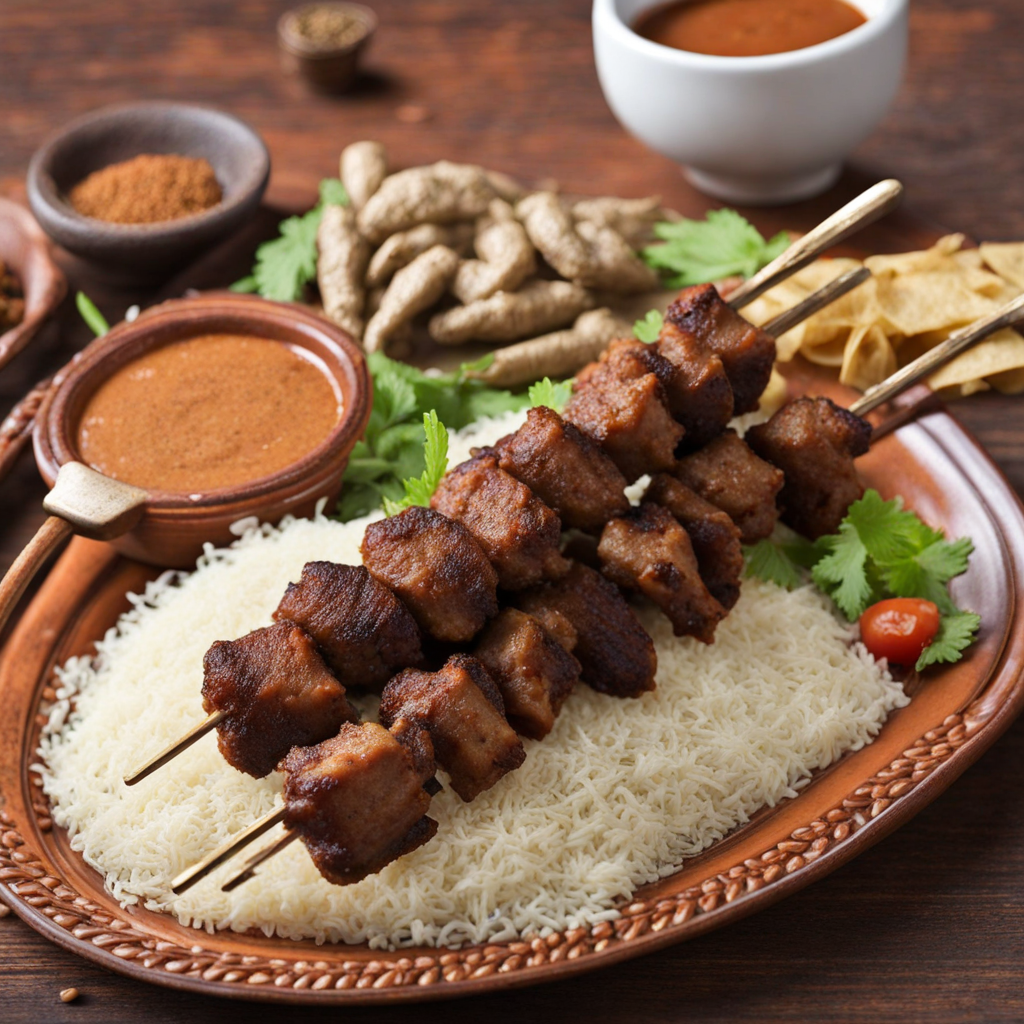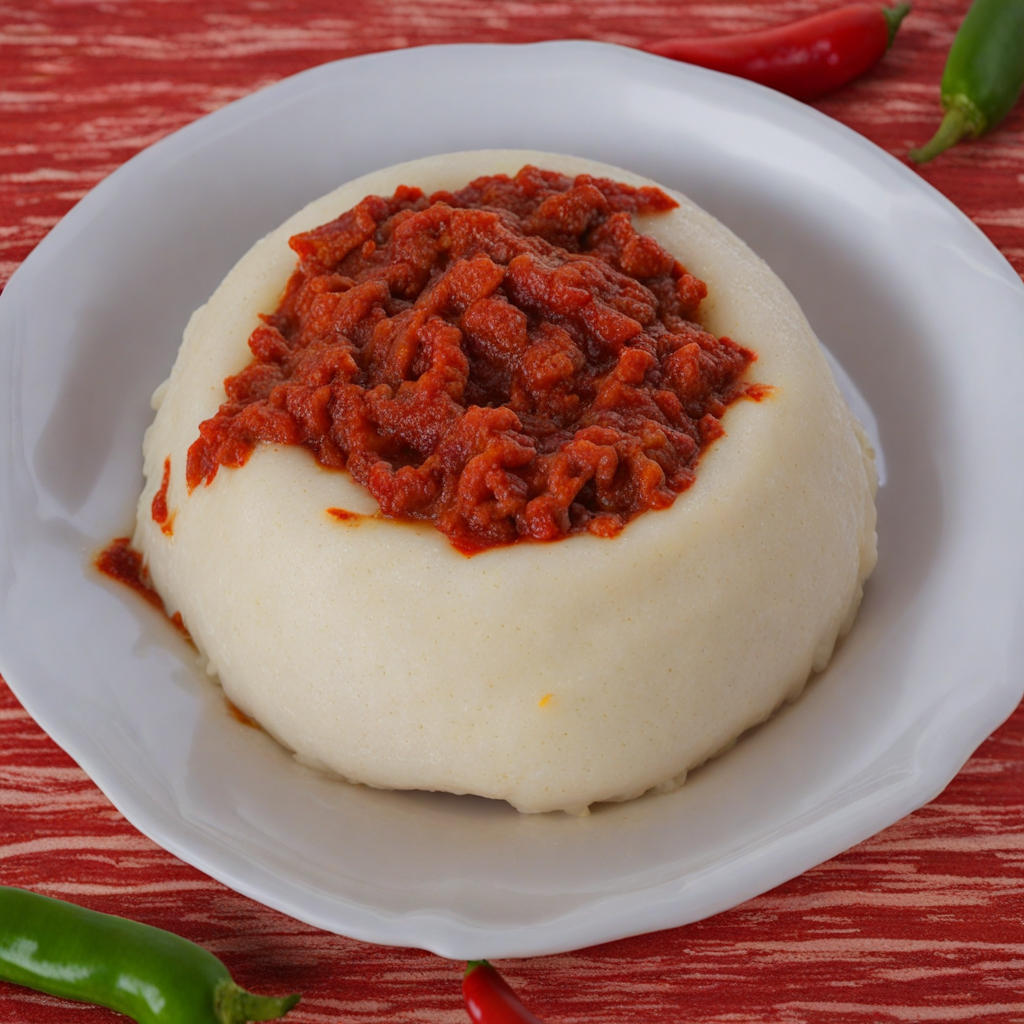Elaimi
Elaimi is a traditional Sudanese dish that captures the essence of the region's culinary heritage. This unique meal features tender pieces of meat, often lamb or beef, that are marinated in a blend of aromatic spices such as cumin, coriander, and turmeric. The meat is slow-cooked until it becomes melt-in-your-mouth tender, absorbing the rich flavors of the spices, while also allowing the natural juices to create a savory sauce that is both comforting and satisfying. The use of fresh herbs, like parsley and cilantro, adds a vibrant touch, enhancing the overall taste profile of the dish. Served alongside fragrant, fluffy rice or flatbread, Elaimi transforms into a complete meal that is perfect for sharing. The rice is often flavored with saffron or cardamom, which imparts a subtle warmth and aromatic quality that complements the spiced meat beautifully. Traditionally, the dish is enjoyed communally, with diners scooping up the meat and rice with their hands, creating a sense of togetherness and celebration. The experience of eating Elaimi is not just about the flavors; it’s also about the cultural significance behind the dish. In Sudan, meals like Elaimi are often prepared for special occasions and gatherings, symbolizing hospitality and the joy of coming together. As you savor each bite, you'll find yourself immersed in the rich history and traditions of Sudan, making Elaimi a delightful dish to discover for anyone looking to explore new tastes and culinary experiences.
How It Became This Dish
The History of إليمي (Elim) from Sudan Introduction Elim, often referred to as "إليمي" in Arabic, is a traditional Sudanese dish deeply rooted in the culinary heritage of the country. This unique food not only embodies the flavors of Sudanese cuisine but also reflects the rich cultural tapestry of the region. To appreciate Elim fully, one must understand its origin, cultural significance, and the evolution it has undergone through the centuries. Origins of Elim The origins of Elim can be traced back to the diverse agricultural practices of Sudan, a country characterized by its varied geography that ranges from the Nile River’s fertile banks to the arid deserts. Historical accounts suggest that Elim is made from sorghum, a staple grain in Sudan, which has been cultivated for thousands of years. Sorghum is well-suited to the Sudanese climate, thriving in conditions where other crops might fail. Its resilience and versatility made it a cornerstone of Sudanese agriculture and cuisine. According to archaeological evidence, the domestication of sorghum likely occurred in Northeast Africa, with Sudan being one of the key regions where it flourished. The preparation of Elim, which involves grinding the sorghum into flour and mixing it with water to create a dough-like consistency, reflects the longstanding traditions of Sudanese food preparation. While the basic ingredients have remained constant, variations in the methods and accompanying dishes have emerged, influenced by the different ethnic groups and cultures within Sudan. Cultural Significance Elim is more than just a dish; it holds significant cultural importance in Sudan. It is often served during communal gatherings, celebrations, and religious events, symbolizing unity and hospitality. For many Sudanese families, preparing Elim is a communal activity that brings generations together, allowing for the sharing of stories and traditions. Moreover, Elim is often associated with the concept of "barakah" or blessings in Sudanese culture. It is not uncommon for families to prepare Elim during special occasions, believing that sharing this dish will bring good fortune and strengthen bonds between family and friends. The act of sharing food, especially a dish like Elim, is steeped in the values of generosity and community, which are central to Sudanese identity. Development Over Time As Sudan's history has evolved, so too has Elim. The dish has undergone various transformations influenced by socio-political changes, migration patterns, and globalization. During the 19th and early 20th centuries, Sudan experienced significant changes due to colonialism and increased trade. These shifts led to the introduction of new ingredients and cooking techniques, which gradually made their way into traditional dishes, including Elim. The post-colonial period saw Sudan grappling with internal strife and regional conflicts, which in turn affected agricultural practices and food availability. Despite these challenges, Elim remained a staple, often adapted to include locally available ingredients, such as vegetables and spices, reflecting the resilience of Sudanese culture in the face of adversity. It became a symbol of sustenance during difficult times, reinforcing its role in the social fabric of Sudanese life. In contemporary Sudan, Elim continues to be a beloved dish, cherished by both urban and rural populations. In cities like Khartoum, it has adapted to modern culinary trends, with chefs experimenting with new flavors and presentations. However, traditional methods and recipes are still honored, ensuring that the essence of Elim remains intact. The dish serves as a bridge between generations, connecting the past with the present. Moreover, the globalization of food culture has introduced Elim to a broader audience. Sudanese diaspora communities around the world have brought their culinary traditions with them, leading to increased interest in dishes like Elim. Food festivals, cooking classes, and online platforms have facilitated the sharing and appreciation of Sudanese cuisine, allowing Elim to transcend geographical boundaries and reach new palates. The Preparation of Elim The preparation of Elim is a time-honored process that varies by region and family tradition. Typically, the core ingredients include sorghum flour, water, and sometimes a pinch of salt. The sorghum is ground into a fine flour, which is then mixed with water to form a dough. This dough is shaped into small balls or flattened into discs, which are then steamed or boiled until cooked through. Traditionally, Elim is served with a variety of accompaniments, enhancing its flavor and nutritional value. It is often paired with stews made from meat, lentils, or vegetables, creating a hearty meal that reflects the agricultural bounty of Sudan. The combination of flavors and textures makes Elim a versatile dish that can be enjoyed on its own or as part of a larger feast. Conclusion Elim stands as a testament to the resilience and adaptability of Sudanese culinary traditions. Its history is intertwined with the agricultural practices of the region, the communal values of its people, and the socio-political changes that have shaped Sudan over the centuries. As both a symbol of cultural identity and a beloved dish, Elim continues to thrive in Sudanese society, bridging the gap between past and present. In a world that is increasingly globalized, Elim serves as a reminder of the importance of food in connecting individuals to their heritage and to one another. As Sudanese communities around the world share Elim with new audiences, they not only preserve their culinary traditions but also invite others to partake in the rich history and culture of Sudan. In this way, Elim is not just a dish; it is a narrative of identity, resilience, and community that transcends time and place.
You may like
Discover local flavors from Sudan







